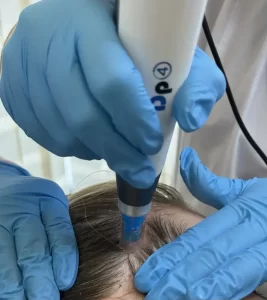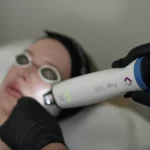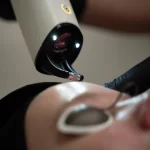Microneedling with Dermal Pen vs. Microneedling RF
Understanding Two Powerful Collagen-Stimulating Treatments

Both Microneedling techniques are advanced skin rejuvenation procedures that stimulate collagen and elastin to improve skin texture, tone, and firmness—but they work in different ways and suit different skin concerns.
How it works:
The Dermal Pen uses fine, adjustable needles to create controlled micro-injuries in the skin. This triggers the skin’s natural healing response, boosting collagen and elastin production. When combined with active serums or PRP (platelet-rich plasma),
the microchannels allow deeper penetration for enhanced results.
Commonly treated concerns:
-
-
Acne scars
-
Enlarged pores
-
Fine lines and wrinkles
-
Hyperpigmentation
-
-
-
Stretch marks
-
Dull or rough texture
-
Key features:
- No thermal energy—only mechanical stimulation
-
Safe for all skin tones (Fitzpatrick I–VI)
-
Minimal downtime (24–72 hours)
- Often combined with active serums (e.g., peptides, hyaluronic acid, growth factors)
Microneedling RF (Radiofrequency Microneedling)
How it works:
This combines microneedling with radiofrequency (RF) energy, delivered through gold-plated or insulated needles directly into the dermis. The thermal energy enhances collagen remodeling, tightens tissues, and improves skin firmness from deeper layers.
Commonly treated concerns:
-
Skin laxity
-
Deeper wrinkles
-
Acne scars (moderate to severe)

Textural irregularities
-
Crepey or sagging skin (face, neck, jawline, body)
Key features:
-
Delivers controlled heat into the dermis for deeper remodeling
-
Stimulates tissue tightening and lifting
-
May require fewer sessions for visible improvement
-
Downtime varies (2–5 days depending on intensity)





